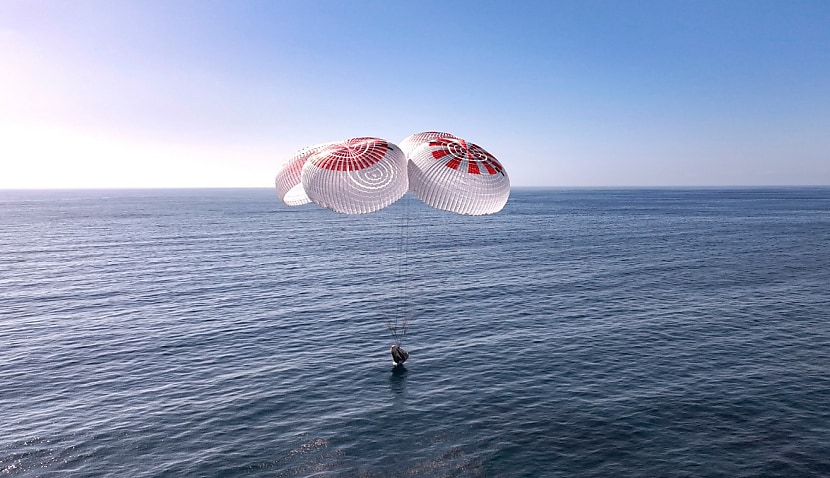
Eric Philips’ Dragon Capsule splashed down off the coast of California on Friday, with all four members of the crew uniquely exiting the spacecraft unaided 45 minutes later.
The adventurer had spent nearly four days in orbit as part of the private Fram2 mission that flew directly over the north and south poles in low-Earth orbit.
Philips is a professional explorer who has been to the Poles around 30 times and served as the crew’s mission specialist and medical officer. The mission was funded by Chun Wang, a cryptocurrency billionaire born in China but who now claims Maltese citizenship.
“The ride to orbit was much smoother than I had anticipated,” Wang said in a post while in orbit.
“It honestly felt like just another flight. I had imagined it would feel like being in an elevator that suddenly drops, but that sensation never came.”
In total, Fram2 successfully conducted 22 experiments sourced from eight countries aimed at advancing human health and performance, particularly for long-duration missions.
The research onboard included capturing the first human X-ray images in space, studying blood flow restriction exercises to preserve muscle and bone mass, and growing mushrooms in microgravity.
It was also the first crewed mission to go into a polar orbit with an inclination of 90 degrees. Previously, the highest inclination flown was just 65 degrees on early Soviet Vostok missions.
The splashdown, meanwhile, was the first for a Crew Dragon spacecraft in the Pacific and comes after SpaceX announced last year it would shift re-entries from the Florida coast to better control the re-entry of the spacecraft’s trunk section.
Also onboard are Jannicke Mikkelsen, a Norwegian cinematographer who acted as the vehicle commander and Rabea Rogge, a robotics researcher from Germany who was the mission pilot.
Space Connect previously reported how Philips was picked for the mission after Wang – then a client of his at his adventure company – asked him via text.
“The text was words to the effect of I’m continuing the idea of this mission into space, and I’m looking for a polar explorer,” he said.
“Little did I know that I would be the chosen one.”
Wang, meanwhile, said during a pre-flight discussion that he was driven to pursue space by a “lifelong curiosity” of the polar missions.
“As a kid, I used to stare at the blank white space at the bottom of world maps, wondering what was out there,” he recalled.
Philips’ blast-off comes after Dr Chris Boshuizen reached suborbital space onboard Blue Origin’s second crewed spaceflight in 2021. Previously, both Paul Scully-Power and Andy Thomas left Earth, but both did so technically as US citizens.
In February, Elaine Hyde also flew to suborbital space on a Blue Origin flight. Hyde was born in Singapore, studied at school and university in Victoria and then moved to the US, though holds dual Australian citizenship.
Finally, last year, Katherine Bennell-Pegg became the first person to qualify as an astronaut under the Australian flag, after completing training with the European Space Agency. While she is now eligible for missions to the International Space Station, there is no guarantee that she will ever go to space.
The argument over what constitutes an astronaut has also become muddied in recent years after the Federal Aviation Administration in 2021 effectively changed its qualifications to rule out many space tourists receiving their commercial wings.

Adam Thorn
Adam is a journalist who has worked for more than 40 prestigious media brands in the UK and Australia. Since 2005, his varied career has included stints as a reporter, copy editor, feature writer and editor for publications as diverse as Fleet Street newspaper The Sunday Times, fashion bible Jones, media and marketing website Mumbrella as well as lifestyle magazines such as GQ, Woman’s Weekly, Men’s Health and Loaded. He joined Momentum Media in early 2020 and currently writes for Australian Aviation and World of Aviation.
Receive the latest developments and updates on Australia’s space industry direct to your inbox. Subscribe today to Space Connect here.









